The Story – Inviting dolphins and first sunsets
Finally, I stepped out of the kijang (shared public car) in to the dawn at the seafront of Berau. I have just experienced one of the roughest rides in my whole half year stay in Indonesia. The day before, I left Kutai National Park at noon and waited until 6 pm for a kijang to Berau. It was a 12 hour overnight drive on some of the worst roads in the country, 350 kilometers across jungles and plantations (sadly) of East Kalimantan.
I was dead tired, but the vision of almost a full week on a paradise island was keeping me fresh. Maratua is visited by few tourists who virtually all stay in luxurious resorts that are growing like mushrooms there. Fortunately, this is no concrete development, but mostly wooden huts on piers above the water. Nevertheless, they are all crazy expensive and were well above my budget at the end of my 6 months in Indonesia.
If you check out Maratua from satellite view, I think you will understand why I was so keen to go there. It is a karst island developed over millions of years by coral reef built-up into a horseshoe shaped paradise. It also lies in one of the most biodiverse marine regions of the world.
Luckily, after some research I found a cheaper but still nice place to stay in the local village, away from the resorts. I got contact for my connection, who should pick me up at the seafront in Berau and take me on a boat to Maratua. I stepped on the small fast boat full of well-off Indonesian tourists heading for one of the resorts.
Berau lies more than 50 kilometers from the sea. Therefore, at the beginning, the boat was zig-zagging through the tangled canals of the muddy river delta. I was quite a sight and the banks of the river with tall grass must be a heaven for birds. The ride got quite bumpy after we got out to the open sea and we were all holding tight to the rails on the boat.
As we got close to Maratua, the uncomfortable boat ride was compensated by a pod of dolphins who were inviting us to the island. The dolphins got so close to the boat, that I tried to put my GoPro stick to the water to make an underwater close-up video. However, the stick was stuck due to dried salt and I was not able to extend it to full length. I tried to incline myself as much as possible to put the camera deep enough into the passing water. Unfortunately, all I got is a video of swirling water with a few split second appearances of a dolphin mere meters away. At least I was able to make quite a nice surface video of the inviting sea mammals.
I am not a marine biologist, but it looks like these were bottlenose dolphins. If you can identify them better, please leave a comment below!
After arrival to Maratua, we first stopped at the Maratua Paradise Resort. The place looked fantastic and I later found that some of the best snorkelling spots are found around it. However, this one was out of my budget so I was taken to the village, where I stayed at Borneo Maratua Lodge. The room looked very nice and clean, and the bed and air conditioning was the only things I needed to fall fast asleep after the almost 24 hour journey.
At the resort, I took a picture of a map of Maratua with points of interest. Quite a few adventures awaiting you on this island! Borneo Maratua Lodge is at Kampung Bohe Bukut village, on the western shore.
Before I fell asleep, however, I could not resist to walk down the local jetty jutting far into the sea. It was early afternoon in rainy season, so the sky looked exceptional with huge storm clouds hanging on the horizon. Even without the sun, I could easily see the line of the local coral wall drop-off based on the color of the water.
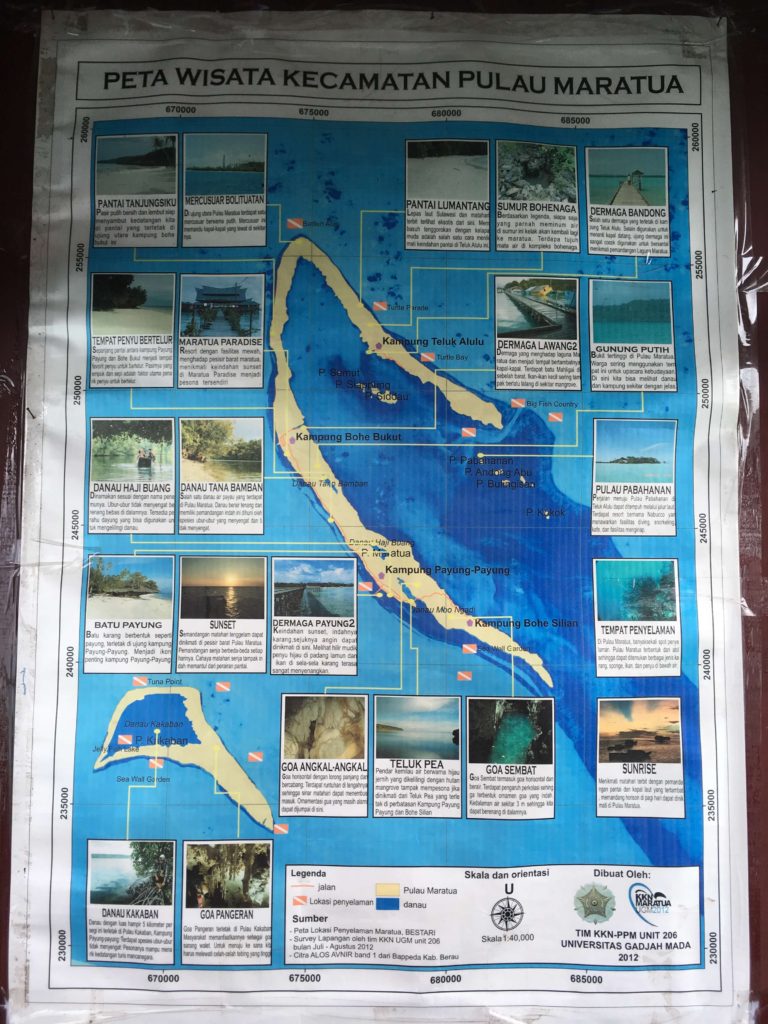

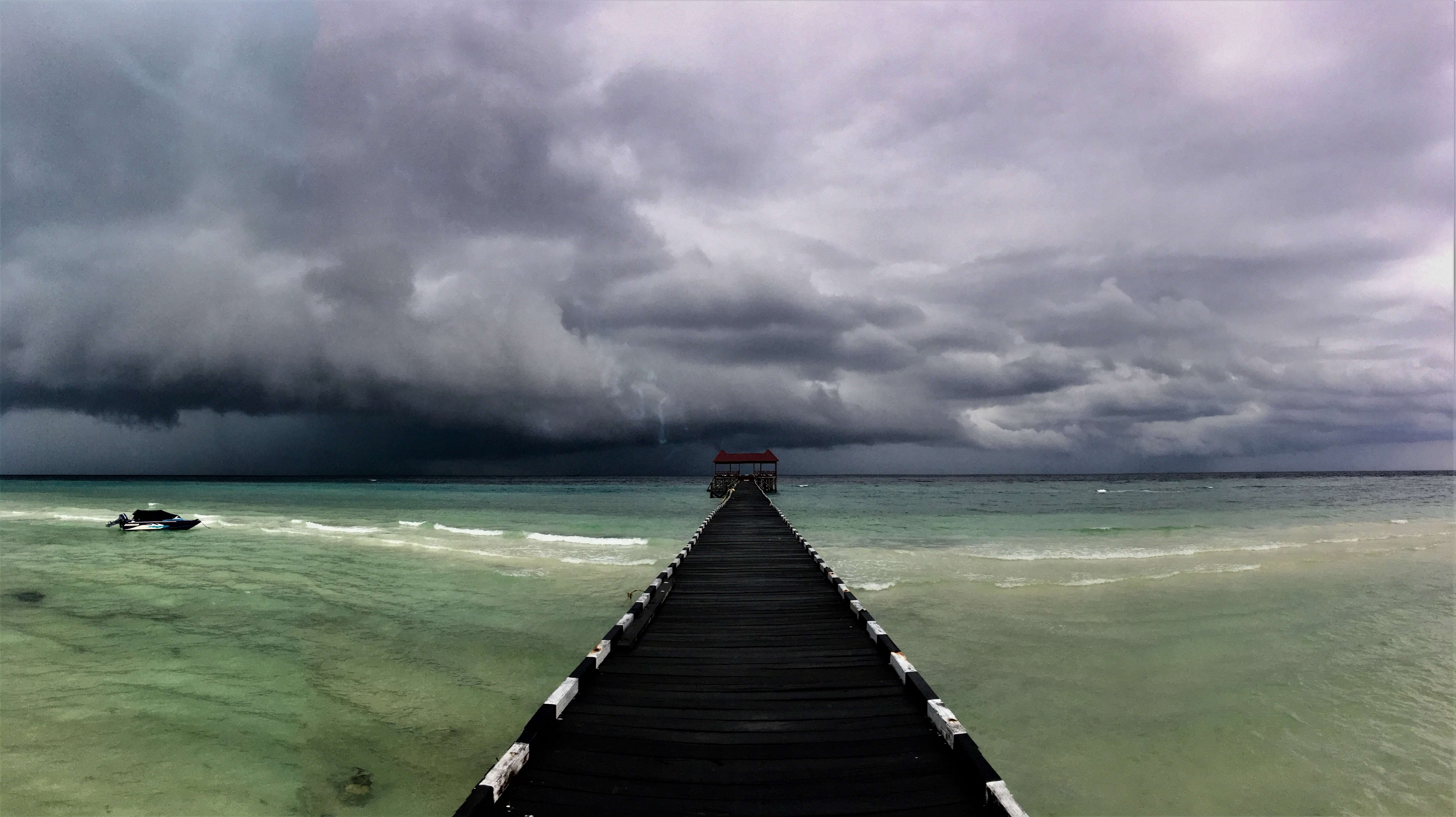
I fell in love with walks on the local jetty and would make tens of pictures of the wonderful Maratua skies from it. Not sure if sunsets in this part of the world have an impressionist quality in them all year round, but during rainy season, they surely did. Equipped only with a smartphone, I learned the lesson to always take a proper camera on epic journeys, even if heavy.
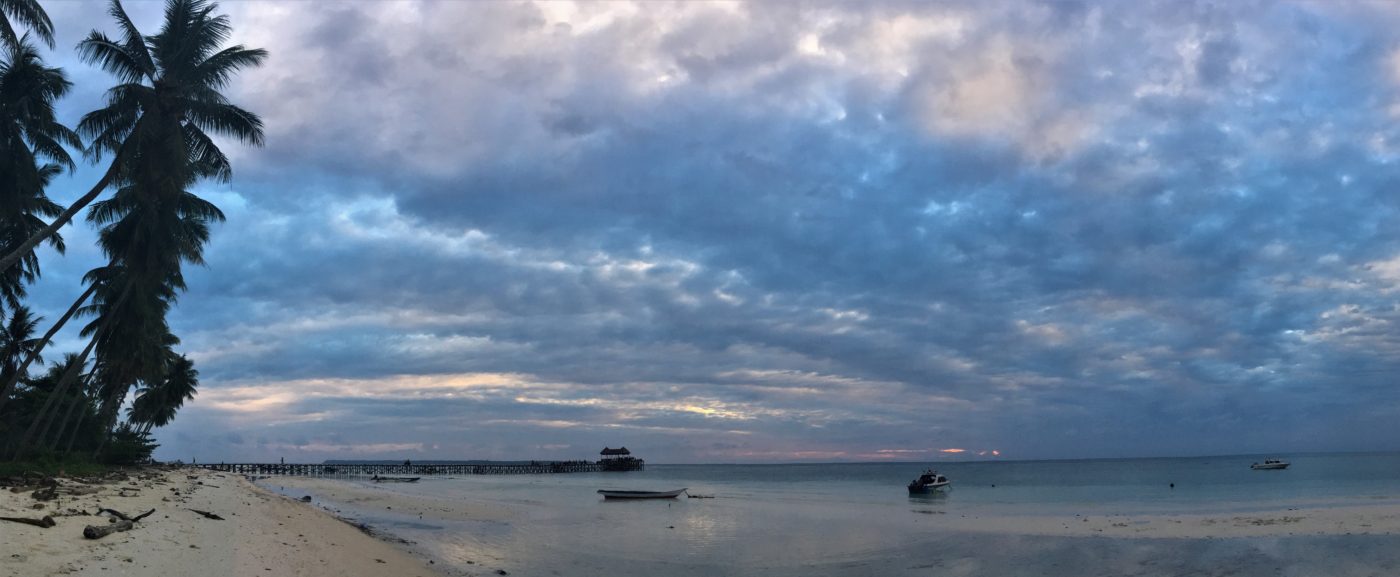

Sunset in a Muslim country means a call to prayer. As you can see on the video, this only added to the atmosphere of the island.
Exploration – Biking, caving and snorkeling
There is much to do in Maratua besides soaking up the sun or the sunset. As I am not really the one to be able to lie on the beach for days, I set out to explore this beautiful island. Above water as much as below, off course.
While it may not look so, Maratua is fairly big if you do not have a means of transport. I am sure it would be possible to hire an ojek (a scooter taxi) in the village, but that would not give me the freedom of exploration. Instead of renting a scooter, I opted to rent a mountain bike. It is cheaper, I would get some exercise, and it is also less noisy and has no emissions.
Bicycle turned out to be a perfect means of exploring the island. There was a very well maintained asphalt road leading south from my village, lined with rainforests. It connected the village of Bohe Bukut with the village of Bohe Silian at the southern tip of the island. It passed a few luxurious resorts, a small airport and the village of Payung-Payung. From the main road, there were frequent exits onto dirt paths leading into the jungle or to a beach.
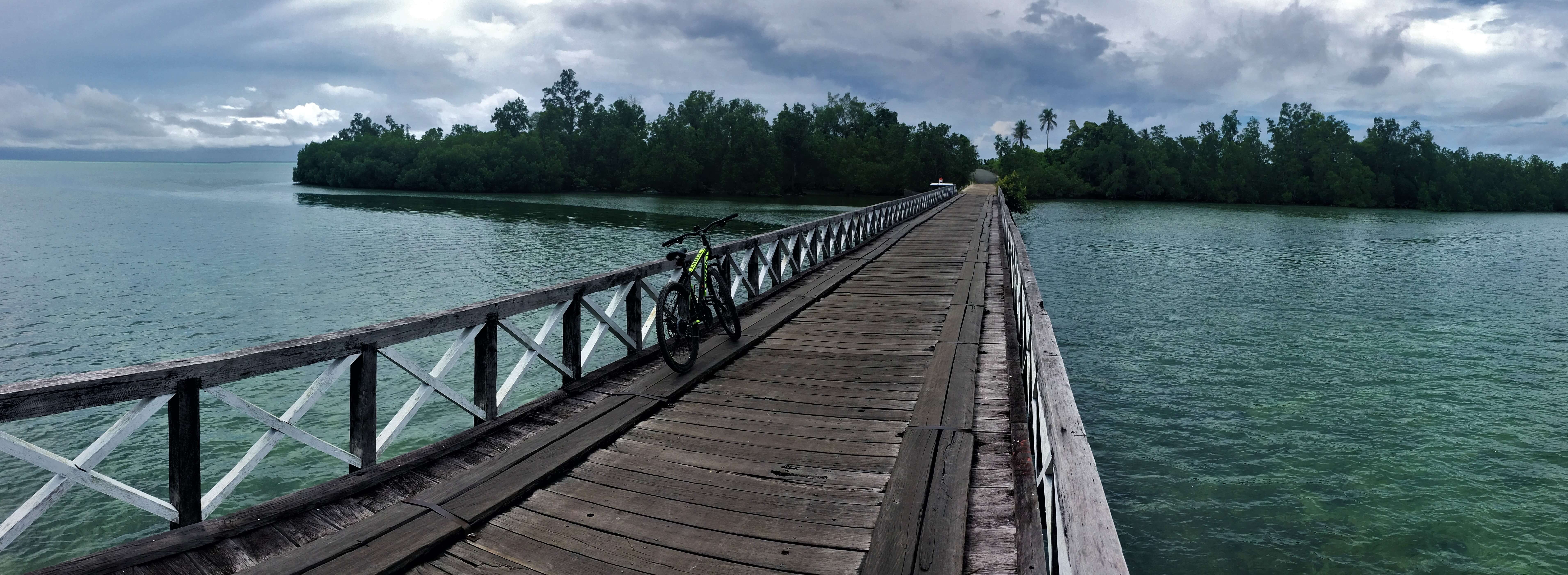
Exploration meant doing 40 to 50 kms every day in the equatorial heat and humidity, but it had its advantages. Bicycle is very silent compared to a motorbike. Thanks to this, I was able to spot lots of local birds in the rainforest around. One of the things I love most about exploration is encountering wildlife randomly, when nothing is staged and you just stumble on a beautiful animal going about its business.
Imagine how happy I was when I saw a green parrot with a red beak flying just in front my bike. Surely, nothing spells jungle more than a brightly colored parrot. I found out later this was a blue-naped parrot, and Maratua even has its own endemic subspecies of this bird.
I saw lots of them on the trees lining the roads and jungle paths. Unfortunately, it was completely impossible to take a picture of it with a smartphone, so I am attaching a picture from Wikipedia.
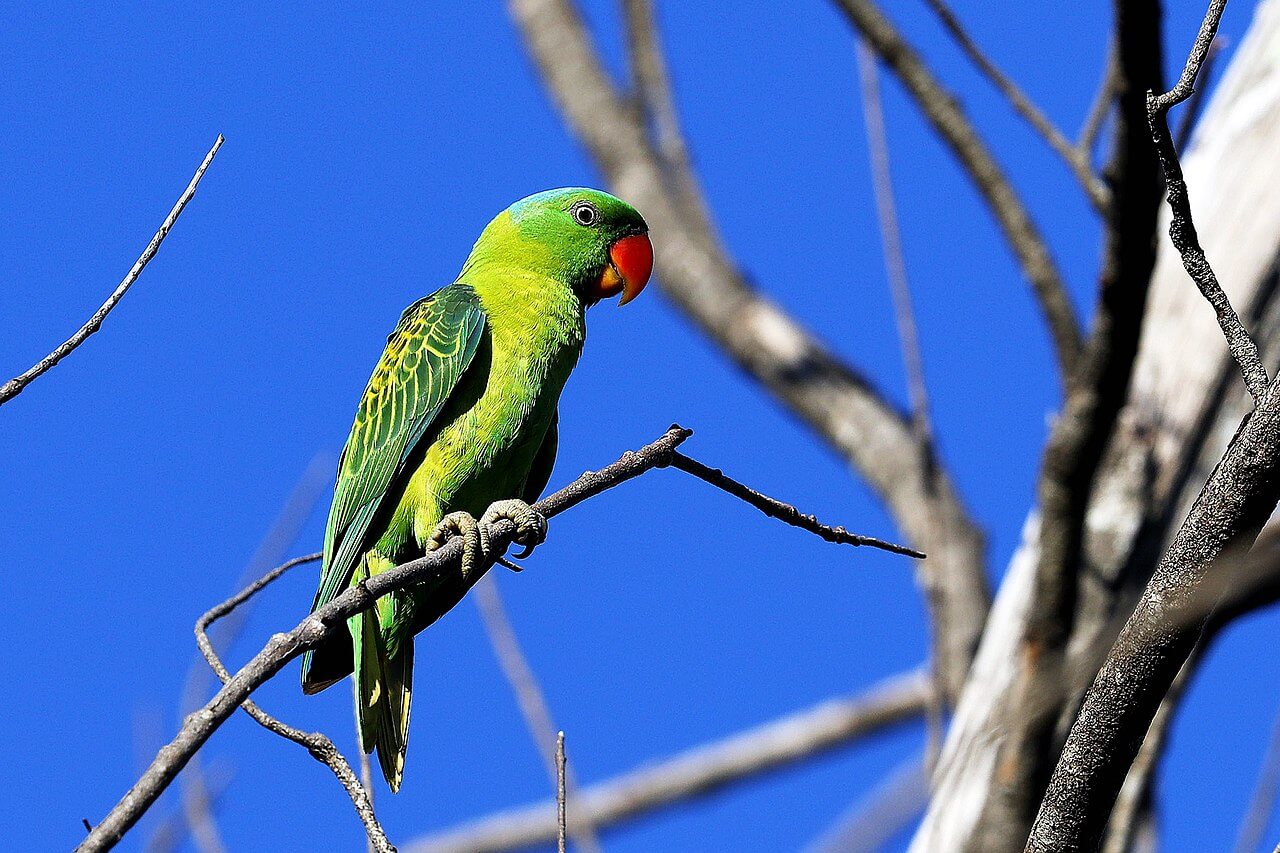
One of the unique features of Maratua is its karst geology. This means the island is prone to the creation of caves and cenotes – deep depressions in the rock filled with crystal clear water. Thus, besides exploring the two other villages on my side of the horseshoe, I decided to check out two of the caves. The residents of the luxurious resorts rarely leave them, which meant I did not meet a single other tourist while exploring the island.
The first cave, Goa Sembat, was close to the Bohe Silian village. This was the farthest point from my homestay and required approximately 50 kms of cycling roundtrip. Bohe Silian was a nice village with houses on stilts hugging the coastline and several piers running into the turquoise water. From these, you can see the other ‘arm’ of the horseshoe-shaped island and the surrounding small coral islets.
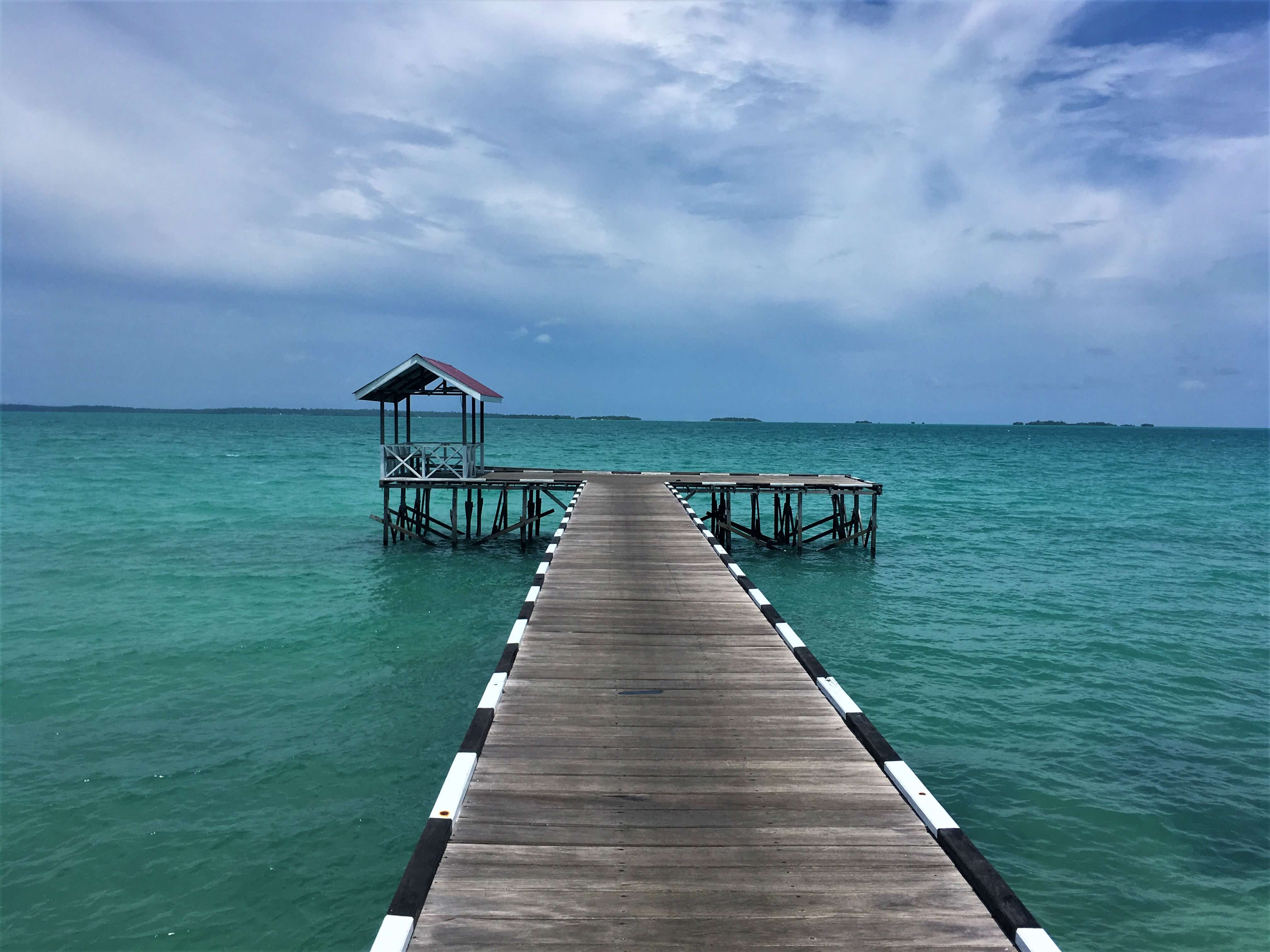
Now, I knew there should be a side path running from the village to Goa Sembat cenote. As I could not find it, I asked the villagers and they appointed two local boys to take me there. We climbed up on the karst rocks deeper into the rainforest above the village. After passing some very narrow passages, we arrived at the cenote.
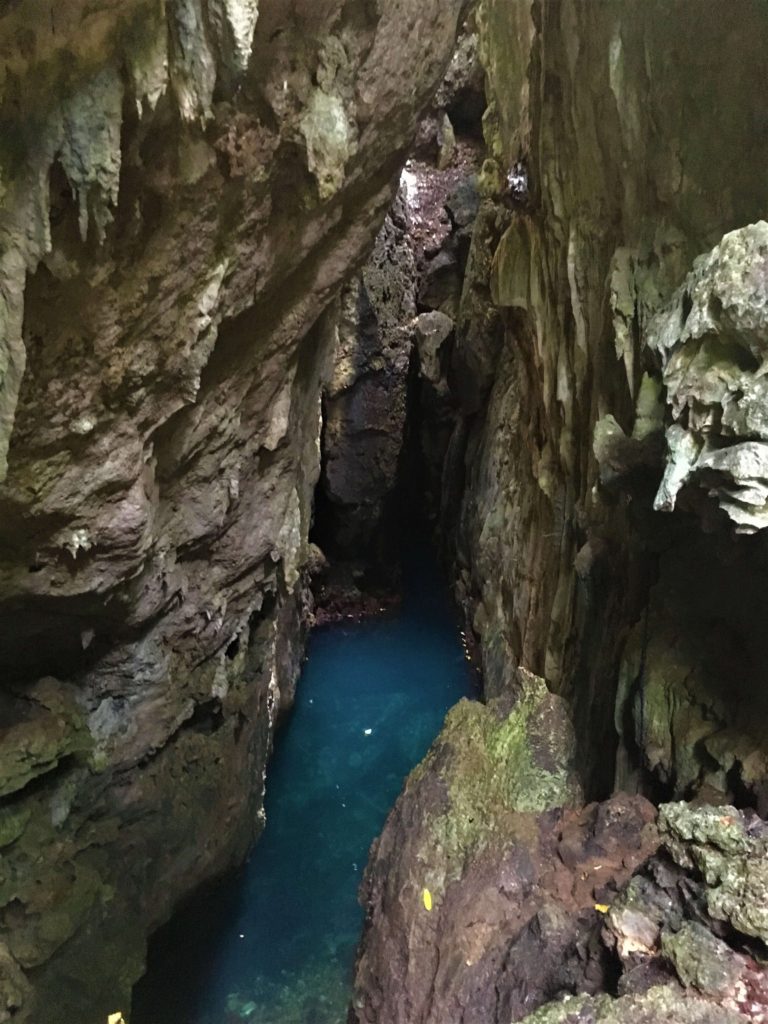
Unfortunately, at that time of the day the sun was not shining into the cave, so I could not see it in full beauty. Still, I could see the water in the cenote was very clear, and I could also see hundreds of mosquitos flying around. I did not have much time before they would eat me alive, so I decided to take a dip in the cool water of the cave. I know cenotes are meant for jumping in, but the jumping point seemed a bit difficult to access, so I used the ladder instead.
Goa Sembat was surely interesting, but my curiosity and desire to jump into a cenote were not satisfied. Therefore, I the next day I set-off to the second cave, named Goa Halo Tabung. This one was not on the tourist map in Maratua Paradise Resort, but it was marked on Google maps.
To reach Goa Halo Tabung, you need to pass the Payung-Payung village and cross the bridge over the bay. Then you must continue on the road until you see a sign pointing right onto a dirt road through a jungle. The jungle in these places was considerably thicker and ‘wilder’ as close to the main road, and there were lots of colorful butterflies and birds flying around.
I reached the cenote which was surrounded by rainforest green and had the most inviting transparent water.
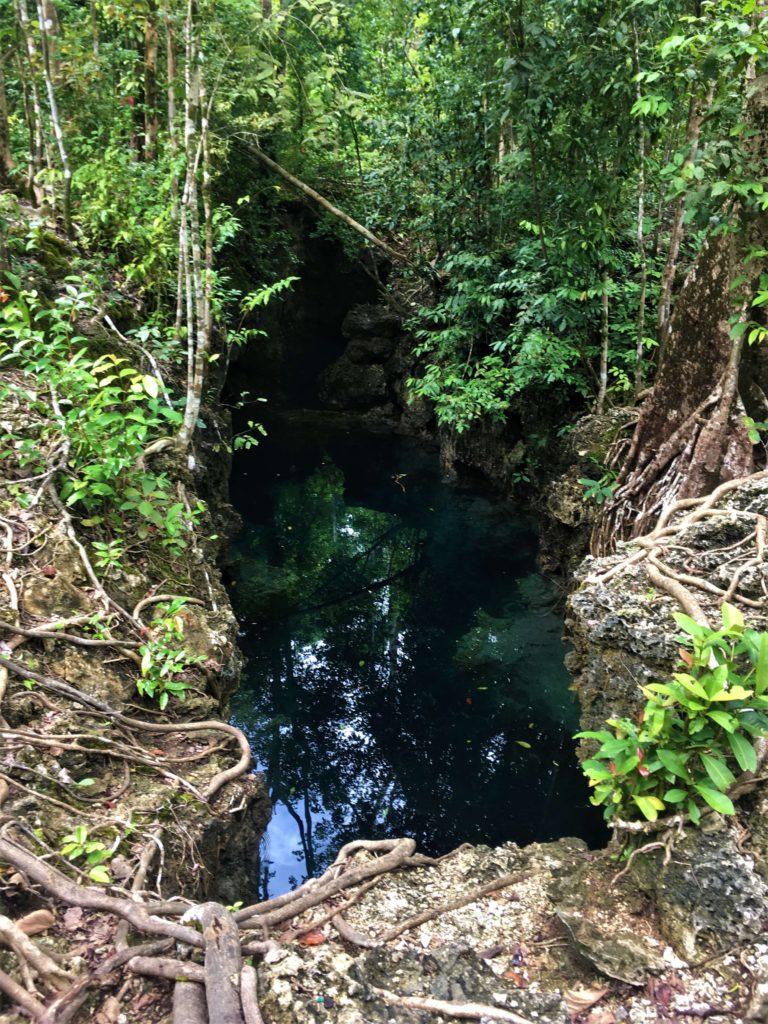
Continuing towards the shore, I found a simple hut with a jetty. Two local boys staying there have been collecting money for the local attraction. I paid the ‘entrance’ fee, which was around a dollar. One of the guys that was not sleeping took me to the cenote and asked me if I want to jump in from the edge, which was around 3-4 meters above the water. After he jumped in, I was assured it is safe and I followed him soon.
The water was super refreshing and very clear. Putting on my snorkeling mask, I could see the cave was narrowing down considerably in the deep. Therefore, I could not see how deep it actually was, but I estimate around 15 to 20 meters. After the jump, I swam in the transparent water into an opening on the side of the cave. This led to another open section of the cenote where I could climb out of the water. The jump was so fun I could not resist to do it again.
One slightly scary reminder that I am in wilderness happened on my way back through the jungle path. A large group of screeching macaque monkeys was crossing the path from one part of the forest to another. I left my bike on the asphalt road so I was on foot and had to hurriedly pass right next to the monkeys, which were staring at me angrily and showing me their sharp teeth. Being bitten by a small macaque, when you cannot find out if it is rabid would not be fun, so I was relieved when I got to my bike and was riding it home as it was nearing sunset.
https://youtu.be/PSPAV2J_D44https://youtu.be/CNZvFZ1kjoU
Every time I got back from my explorations to my homestay, I had the same program. I had dinner in one of the only two local warungs (typical Indonesian restaurants) and then stared at the sunset. I could not help taking pictures of the local beach and the pier during sunset and during the gathering of monsoon clouds. Every single time they surprised me with new colors.
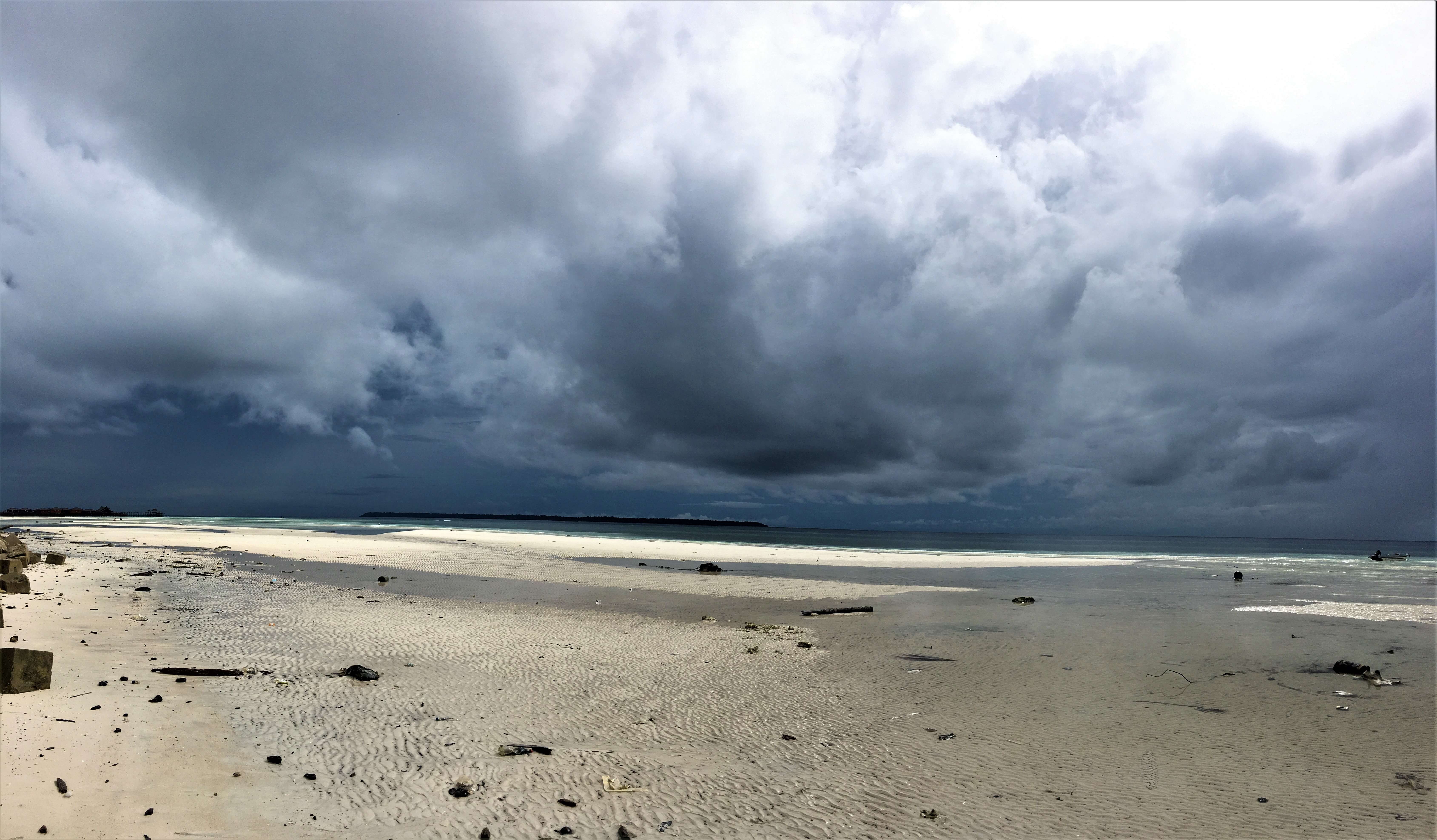
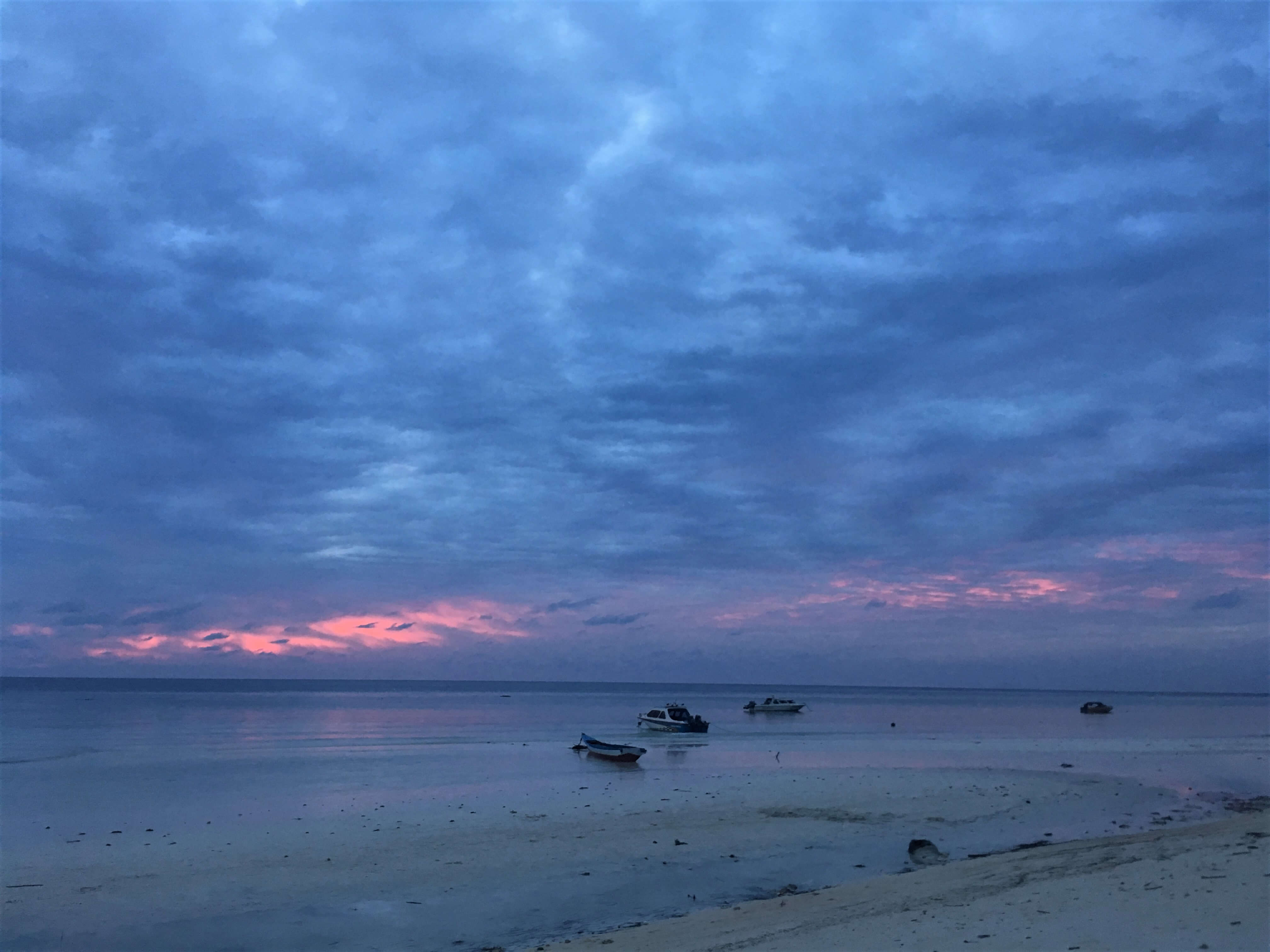
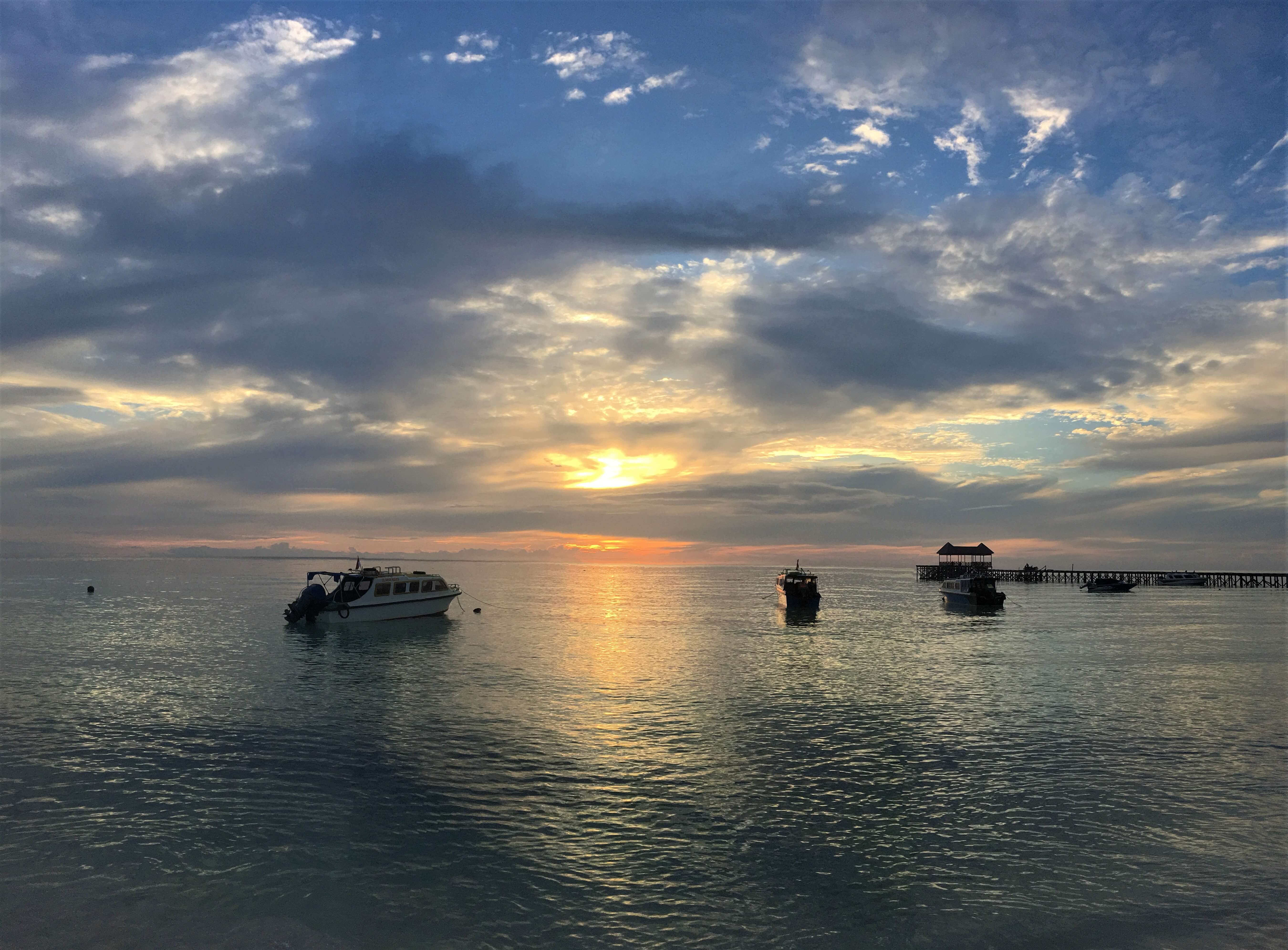
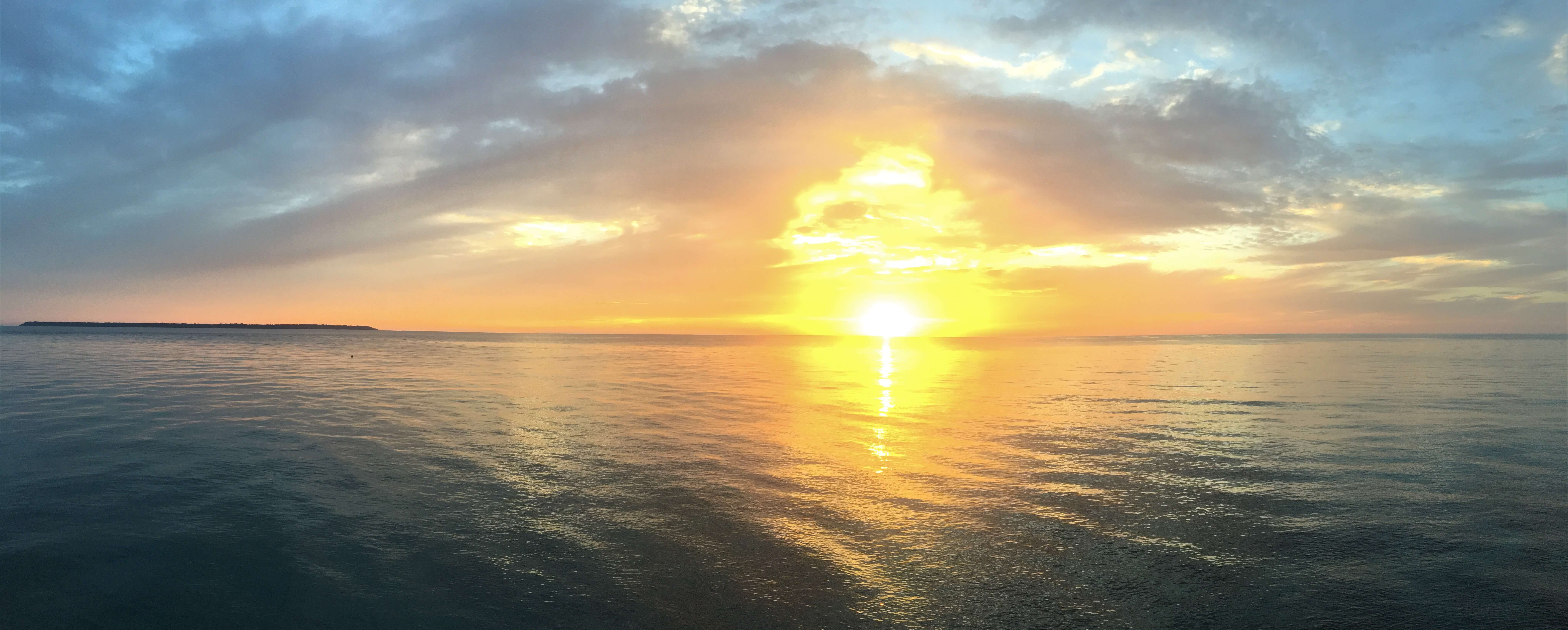
Besides exploring the land, I spent my time discovering the wonders of the local marine life too. Turtle lovers will like to hear that Maratua has one of the biggest concentrations of green turtles I have even seen. You can never get tired of wild animals as big as a dining table swimming leisurely by your side or watching them relaxing in between the corals. I hope the turtles have forgiven me that I sometimes spooked them when they least expected it.
Besides being a beautiful island with outstanding sunsets, Maratua is also, and for many people primarily, a diving paradise. The whole Derawan archipelago is believed by some to be the third most biodiverse marine area on Earth after Raja Ampat and the Solomon islands. Unfortunately, my budget was growing smaller by this time of my Indonesia trip. Therefore, I did not dive there, choosing budget-friendly snorkelling instead. More on diving in Derawan archipelago in another blog post!
One thing I truly regret not doing while I was in Maratua is spotting the legendary Coconut crabs. Coconut crabs are the biggest arthropods in the world living on land. They can weigh around 4 kg and grow more than 1 meter big. Their name is the result of their massive claws, which they use to easily rip open a coconut to eat its flesh. Coconut crabs are nocturnal creatures that live freely on Maratua. I have been told they can be easily spotted on the local beaches at night if you are a bit further from the villages.
I did one more trip while staying on Maratua – to the wonderful island of Kakaban with stingless jellyfish. However, that story again deserves a dedicated blog post as it is truly a one of a kind experience. After relaxing myself fully on Maratua, I set off to the island of Derawan. After all, it was nearing new moon, and it is said the biggest chance of spotting a whale shark on Derawan is during a new moon 🙂
To get lots of valuable and hard to get practical information about how to stay on Maratua, check the Practical Information part of the blog.